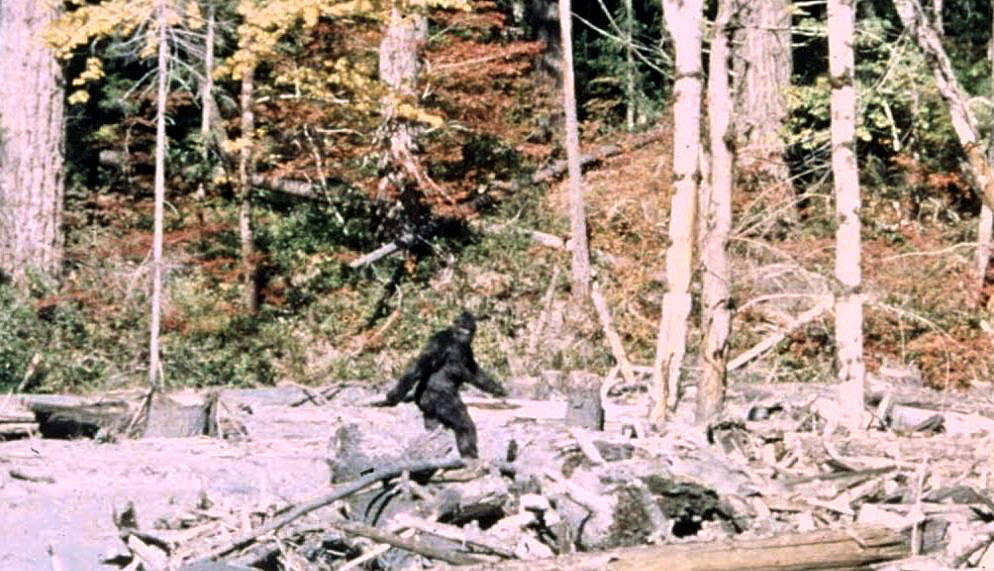Why Sasquatch Hasn’t Been Caught
Unbelievable Beast
Passed down orally around campfires for multitudes of generations, the folklore of a tall, heavyset ape-like creature has fascinated ardent listeners waiting for the thrill of a hunt. Indeed, this cryptid, stockier than a gorilla and quite possibly spookier than a ghost, has been a target of kooky enthusiasts willing to roam frequently in forests to finally prove their sanity and, perhaps, win a prize and become famous. To this day, this bipedal beast has yet to be captured. Therefore, conventional science has classified this humanoid as non-existent.
With respect to the study of zoology, this position of disbelief is reasonable. There is no reason for reputable institutions to claim an organism as real without unfalsifiable pieces of evidence. At best, an animal needs to be captured alive to remove any doubt of its existence. Along with that of the Lovelong frogman, werewolf, Dover Demon, and other mythical creatures, the existence of Sasquatch, gargantuan as it is claimed, has yet to be verified. You’d think a lifeform of that stature would have been spotted by now. These humanoids would certainly have a much harder time hiding from humans than delicate fairies coming out at midnight, lighting the pitch black air with their golden dust; or minuscule Smurfs hiding in their intricately designed societies, diligently working from dawn ‘till dusk.
The Prehistoric Sasquatch
The animal that most resembles the paranormal Sasquatch is one that is now extinct – Gigantopitheus. This prehistoric ape, roaming the jungles of South Asia about one million years ago, was similar to the orangutans that live today. Towering over 10 feet and weighing over 1,000 pounds, this ape was definitely the “Bigfoot” of its era, except it was quadrupedal like current day apes and monkeys. Fossils of its teeth indicate that the ape most likely had a diet consisting of fruit, seeds, and grass. In short, Gigantopithecus was an herbivore.
What caused the extinction of this ancient version of Sasquatch? Well, a few events. First, as the Tibetan plateau shifted upwards, the South Asian climate at the time became cooler and drier and, in turn, the forests in which the ape resided shrunk in size. Second, Homo erectus, an ancestor of modern humans, out competed the ape. Although the ape was larger, Homo erectus would have presumably been more intelligent by virtue of the fact that it more closely resembled Homo sapiens; they are in the same genus after all – Homo. Third, the ape, maturation-wise, developed slowly. They exemplified all the disadvantages that K-selected species tend to possess.
Televised Accounts
However, in spite of the fact that Gigantopithecus is no longer with us, small pockets of humans still like to cry “Sasquatch” in the same fashion that Jack cried “Wolf!” in Aesop’s famous Greek fable The Boy Who Cried Wolf. Many claim to have seen the beast with their own eyes. As stated above, organizations held responsible for respecting the practice of zoology ought never be hasty in purporting the existence of an animal without solid proof. That said, genuine first-hand accounts by individual people should be, at the very least, considered.
If, back in the 2000s and early 2010s, you’ve habitually watched Animal Planet, the History Channel, the Discovery Channel, and the like, you’ve probably watched at least a few confessionals involving people claiming to have encountered Sasquatch. It’s probable that some of these people went on the corresponding shows for the money. On the other hand, many of those people seemed honest.
Sasquatch vs. Bear
Now, I know what you are thinking, “It was probably just a bear.” This is a valid rebuttal if the supposed encounter took place in the dark or in dim light, if the human had blurry vision, or if the unidentified fauna stood still behind flora. However, what if the believer was in broad daylight and stated to have seen the bigfooted mammal walk? This Goliath of the Pacific Northwest deciduous forests is said to walk eerily like humans. The gait of a bear walking on its hind legs is noticeably similar, yet distinguishable, to that of humans. Bears on their hind legs sort of wobble in a manner that humans don’t. Compare the locomotion of this black bear to that of this supposed female Sasquatch. There’s definitely a distinction.
To imply that someone with clear vision, even if startled, can’t tell the difference between a bear and primate during the day in open space is to insinuate that they are as sharp as a balloon or as bright as a shadow. Fear does not necessarily lead to sudden mental atrophy. If you see a plane falling towards you, do you confuse it for a rocket? Do people running away from a tsunami imagine it to be magma?
The Ape That Always Escapes
So, to finally address the title of this post, why was Sasquatch not caught yet? No one can say for sure. Here’s a possibility: Sasquatch is a nature spirit (here, “spirit” is used broadly). Like a phantom, it lacks a physical body. As such, the ape can choose when it is seen by humans and when it is not. Remember that humans don’t see everything. We see only the objects that reflect what we call visible light. Bees can see ultraviolet light and snakes can see infrared light. The point is, different organisms see different objects; with an overlap, of course.
Within the realm of spirituality, the idea that separate bodies exist is not groundbreaking. An interesting post, titled “Spiritless Humans,” provides a basic overview of three bodies – spirit, soul, and (physical) body. The spirit (used strictly) is the indestructible otherworldly essence of a life form. This is the consciousness that either rises to heaven, drowns in hell, or comes back to Earth to reincarnate, depending on the religion. The physical body is, well, what we see. The soul is the intermediary between the two. This link can be further divided into two bodies – astral and etheric. The astral part of the soul holds aspects of our “emotional life and memories,” along with our passions; whereas the etheric part of the soul acts as the life force that hinders the decay of our bodies.
Which Lifeforms Have Which Bodies?
The bottom of the post states the following: Humans each have a spirit, astral body, etheric body, ego, and physical body. Animals each have an astral body, etheric body, and physical body. Plants have only etheric and physical bodies. “Astral wildlife and etheric thought-forms,” whatever the author alludes to, have only astral and etheric bodies, no physical bodies nor spirits. The spirit is the only body that transcends this space-time plane and meets with its divine Creator. Once someone dies, the physical body decays into the dirt and the soul – both astral and etheric – disintegrates into the void. Thus, unlike spirits, physical bodies and souls last only one lifetime. All living organisms on Earth have a soul, but only a select number of individuals have spirits.
Is Sasquatch a Ghost?
If Sasquatch is what the author of the post labels “astral wildlife,” then it has no physical body. What the believers actually saw was an etheric body, just like they do when they see ghosts. Who knows how slow souls without physical bodies grow? It’s possible that a single specimen of the ape can live for a very long time. It may even have supernatural powers. A population of supernatural beings need not be large to sustain itself. A well-sustained population consisting of normal animals that are each bigger than a grizzly bear would have been discovered by now.
The idea proposed above is just that – an idea. Though not sound, it’s somewhat valid. Mythology has been a major part of the human experience for thousands of years. Unlike other extant organisms, humans have active imaginations due to being intelligent. Perhaps there is some truth to historic legends. Maybe people in the past were simply bored and needed stories for simple stimulation. Keep in mind that modern digital technology had yet to exist thousands of years ago. People had to keep themselves entertained somehow.
Nevertheless, this beast has been fabled to exist around the world. It has been given many names – Sasquatch, Yeti, Bigfoot, Skunk Ape, Yowie, etc. It has been, and still is, sworn to exist by certain individuals. Perhaps we will crack the mystery and discover a new species. Maybe we won’t. Either way, the tales of the beast will stay with humanity into the distant future. We humans love telling stories. Stories, be they fictional or not, often provide insights to our very nature.

